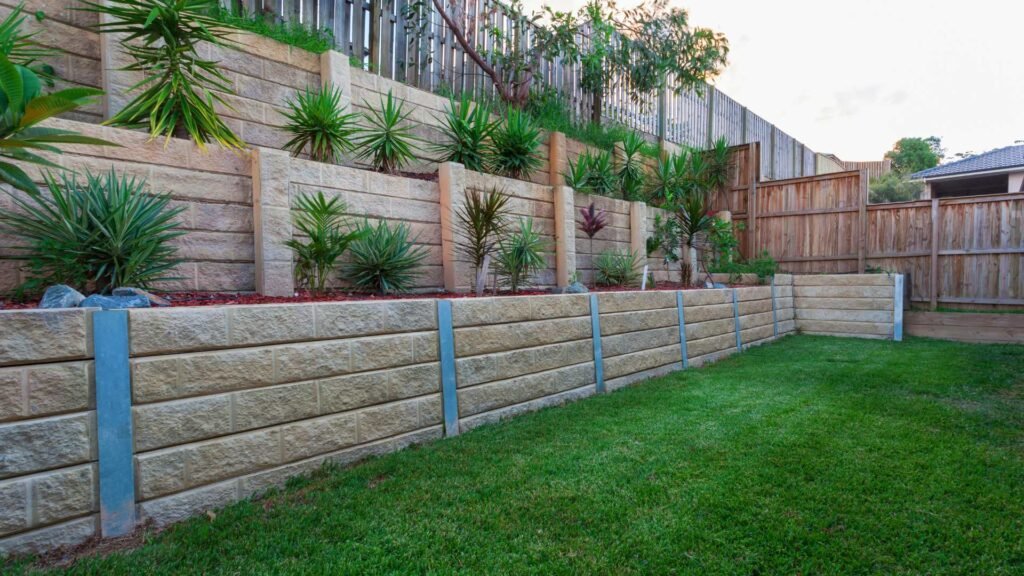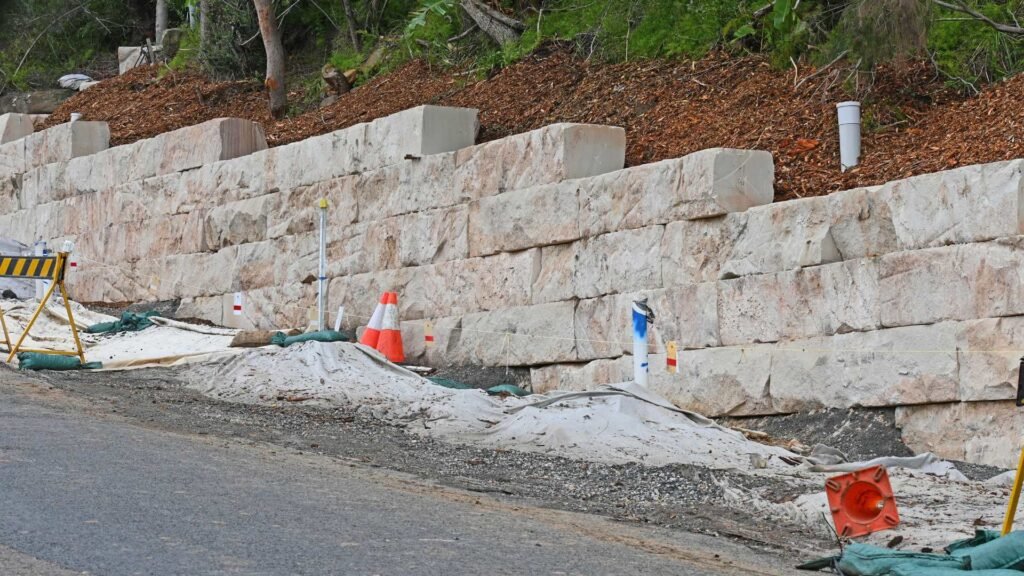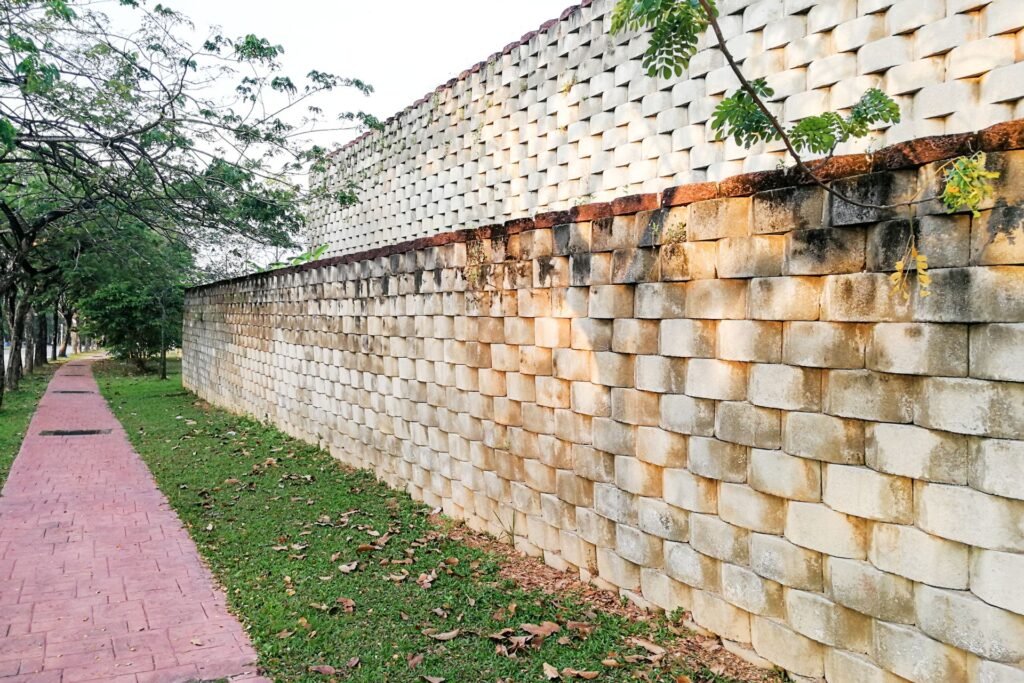Welcome to our guide on understanding who is responsible for a retaining wall, a crucial aspect of property management that often raises questions for homeowners, neighbors, and even local authorities. Retaining walls play a significant role in preventing soil erosion, managing water runoff, and supporting sloped landscapes, making them essential for maintaining both safety and aesthetic value in your outdoor spaces. Whether you’re dealing with a shared boundary wall, navigating council regulations, or simply trying to figure out who should handle repairs, this article will help you understand the ins and outs of retaining wall responsibilities, ensuring you’re well-informed and prepared to take the necessary steps to protect your property and resolve any disputes that may arise.
The responsibility for a retaining wall typically falls on the property owner whose land benefits from the wall’s support. If the wall is located on a shared boundary between properties, both owners may share responsibility. In some cases, local councils or authorities are responsible, especially if the wall supports public land or infrastructure. It’s important to consult local regulations and property deeds to clarify ownership and maintenance duties.
- What Is A Retaining Wall And Why Does It Matter?
- Retaining Wall Responsibilities: Who’s In Charge?
- Legal Responsibilities And Regulations
- Neighbor Disputes Over Retaining Walls
- Maintenance And Upkeep: How Often And Who Pays?
- Hiring Professionals: When Should You Call An Expert?
- FAQs: About Who Is Responsible For Retaining Wall
- Conclusion
What Is A Retaining Wall And Why Does It Matter?
A retaining wall is a structure specifically designed to hold back soil, preventing erosion and managing water runoff in areas with uneven terrain. They’re commonly seen in gardens, along roadways, and in various landscaping projects where there’s a need to create level ground on sloped properties. Retaining walls are not just functional; they can also add a decorative element to outdoor spaces, especially when built with materials that blend into the environment.
Retaining walls come in various materials, each with its own set of advantages and implications for responsibility. For instance, concrete is a popular choice because of its durability and strength, often used for larger, more complex projects. Timber walls are more cost-effective but may require more frequent maintenance due to weathering. Stone or brick walls are aesthetically pleasing but also carry a higher cost and may need specific expertise to install and maintain. The material chosen directly affects long-term upkeep and can influence who is responsible for repairs. A concrete wall supporting a public road, for example, may fall under council responsibility, while a timber wall between two properties may be a shared obligation.
Understanding the role of a retaining wall goes beyond its structural function—it’s also about property value and safety. A well-maintained wall can protect homes and outdoor spaces from potential damage caused by landslides or water issues. However, if responsibility is not clear, it could lead to disputes with neighbors or legal complications. Ensuring clarity on who is responsible for maintaining the wall is crucial for preserving both property value and neighborhood harmony.

Retaining Wall Responsibilities: Who’s In Charge?
When it comes to retaining wall responsibilities, understanding who is accountable for the upkeep, repairs, and construction is key to maintaining peace of mind and avoiding potential legal disputes. The responsibility for a retaining wall can vary depending on the location, property ownership, and any agreements in place. Let’s break down the main parties who could be responsible for maintaining a retaining wall.
Property Owners
In most cases, the property owner who benefits from the retaining wall is responsible for its upkeep. If the wall is built to support your land or prevent erosion on your property, it’s likely your responsibility to ensure the structure remains safe and functional. This includes regular inspections, maintenance, and repairs to address any cracks, bulging, or drainage issues. It’s important for property owners to be proactive in maintaining their retaining walls to avoid larger, more costly repairs down the line. Failing to properly maintain a retaining wall could lead to structural damage, not just to the wall itself but also to surrounding properties, which can increase liability.
Shared Boundaries
When a retaining wall is situated on a property boundary line, things can get a bit more complicated. In such cases, both neighbors might share responsibility for the wall’s maintenance and repairs. However, determining exactly how costs and duties are divided can sometimes cause disputes. Open communication between neighbors is crucial in these situations to avoid misunderstandings. It’s a good idea to have a written agreement in place that outlines each party’s responsibilities, including how costs will be split for any necessary work. Consulting a surveyor or legal expert can also help clarify who holds the primary responsibility.
Council or Local Authorities
In some cases, local governments or councils may be responsible for maintaining retaining walls, particularly if the wall supports public land, infrastructure, or roadways. If you live near a public area with a retaining wall, it’s a good idea to check with your local council to determine who is responsible for repairs. Councils often have specific regulations in place regarding retaining walls, so it’s important to understand local guidelines and ensure compliance when building or maintaining a wall.
Developers and Contractors
For new builds or subdivisions, developers and contractors may be responsible for constructing retaining walls. However, once the property is sold, the responsibility for ongoing maintenance typically shifts to the new property owner. That said, if a retaining wall was improperly constructed and causes issues after the fact, it may be worth consulting with a legal expert to determine whether the developer or contractor holds any responsibility for repairs or compensation.
Homeowners’ Associations
In some communities, homeowners’ associations (HOAs) may be involved in the maintenance of retaining walls, especially if the walls are part of shared spaces or common areas. If you live in a community with an HOA, review your bylaws or agreements to understand whether the association manages retaining walls and whether they cover any costs associated with maintenance or repairs.
By understanding who is responsible for a retaining wall, you can ensure proper maintenance, prevent disputes, and protect your property value.

Legal Responsibilities And Regulations
When it comes to retaining walls, legal responsibilities can vary significantly based on local regulations, which makes it crucial to understand the specific rules in your area. Both in New Zealand (NZ) and Australia (AU), zoning laws, building codes, and local council regulations play a major role in determining who is responsible for constructing, maintaining, and repairing retaining walls.
In most regions, the responsibility for a retaining wall typically falls on the property owner whose land benefits from the wall’s support. This means that if the wall is holding back soil from your property, you are usually responsible for its upkeep. However, when the wall is positioned on a boundary line between two properties, it can become a shared responsibility, with both property owners potentially liable for repairs and maintenance.
Zoning Laws and Building Codes
Both NZ and AU have stringent zoning laws and building codes that regulate the construction of retaining walls. These laws are designed to ensure the safety and stability of such structures, given that a poorly built wall can collapse, causing significant damage to property and posing a safety risk. Depending on the size and height of the retaining wall, you may need to obtain a permit from your local council before starting construction. For example, in many parts of NZ, a retaining wall over 1.5 meters in height typically requires a building consent. In AU, similar regulations apply, with the exact height limit varying depending on the local council’s rules.
The Role of Surveys
Property surveys are an essential tool in determining who is responsible for a retaining wall, especially when it comes to shared boundaries. A surveyor can establish the precise location of the wall in relation to property lines, which is crucial for resolving any disputes about ownership or responsibility. If the wall straddles the boundary, both neighbors may be jointly responsible. However, if the wall is entirely on one side, the responsibility will likely fall on that property owner.
Addressing Disputes and Legal Outcomes
Disagreements over retaining wall responsibility are not uncommon, particularly between neighbors. In such cases, open communication is the best first step. However, if a dispute cannot be resolved amicably, legal action may be necessary. Many regions offer mediation services as an alternative to court, which can be a more affordable and less stressful way to resolve these issues. If the matter does go to court, legal outcomes typically rely on property surveys, local laws, and any pre-existing agreements between the neighbors.
Understanding your legal responsibilities when it comes to retaining walls is crucial for avoiding costly disputes and ensuring the long-term stability of your property. Whether you’re building a new wall or maintaining an existing one, staying informed about local regulations and working with your neighbors can help prevent legal issues down the road.

Neighbor Disputes Over Retaining Walls
When a retaining wall is built along a shared property line, disputes between neighbors can arise, often centered on who is responsible for maintaining or repairing the structure. These disagreements are quite common, especially when one neighbor feels they’re bearing an unfair share of the financial or maintenance burden. In some cases, property owners may even disagree on who benefits most from the wall, which complicates the issue of responsibility.
To avoid such disputes, clear communication is key. If you’re planning to build a retaining wall along a boundary, it’s best to discuss the project with your neighbor beforehand. This helps both parties understand the purpose of the wall, who will benefit from it, and how responsibilities will be shared. Formalizing this agreement in writing is a smart move. Having a legal document, such as a property boundary agreement, can outline who will maintain the wall, how repair costs will be divided, and what actions will be taken in case of damage. This way, both parties have a clear understanding of their roles, reducing the likelihood of future conflicts.
If a dispute does arise, mediation is often a good first step. Mediation allows neighbors to discuss the issue with the help of a neutral third party, aiming to reach a fair solution without involving the courts. However, if an agreement cannot be reached, legal recourse may be necessary. In such cases, a property surveyor can be brought in to establish boundary lines, and legal advice may be needed to determine each party’s responsibility. Taking the time to address disputes early, through communication or mediation, can prevent costly legal battles and maintain a positive relationship between neighbors.

Maintenance And Upkeep: How Often And Who Pays?
Regular maintenance of a retaining wall is essential to ensure its structural integrity and avoid costly repairs down the line. Just like any other part of your property, a retaining wall requires attention to keep it functioning properly, especially if it’s supporting a significant amount of soil or managing water flow. Best practices for maintaining a retaining wall include regular inspections, particularly after heavy rainfall or storms, as these conditions can lead to soil movement or water buildup, which may weaken the wall over time.
Key areas to focus on during maintenance include checking for cracks, bulging, or any signs of movement in the wall. If drainage systems are built into the wall, such as weep holes, make sure these are not blocked to prevent water pressure from building up behind the wall. Additionally, the area around the wall should be kept clear of debris and excessive plant growth, as these can add pressure to the structure or cause root damage.
When it comes to who is responsible for paying for repairs, it generally depends on the location of the wall and whether it benefits one property or multiple properties. If the retaining wall is solely on your property, the cost of repairs will likely fall on you as the homeowner. However, if the wall is on a boundary between two properties, the responsibility might be shared between both neighbors. In cases where there is a dispute, a land surveyor can help clarify ownership and responsibility. Open communication with your neighbor is key in avoiding potential disagreements over who should pay for repairs.
In some situations, the local council or government may be responsible for repairs, particularly if the wall supports public land or infrastructure, such as a road. It’s always worth checking with your local authorities to see if this applies to your retaining wall.
Lastly, insurance coverage can be a helpful safety net for property owners. Many home insurance policies offer coverage for retaining walls, but it’s important to carefully review the terms to understand what is covered. Some policies may cover repairs if the damage is due to specific causes like storms or flooding, but they might exclude wear and tear or neglect. To ensure you’re fully protected, consider speaking with your insurance provider about adding retaining wall coverage if it’s not included in your current policy.
Proper maintenance and understanding who is financially responsible can help you avoid unexpected costs and ensure that your retaining wall continues to protect your property effectively.

Hiring Professionals: When Should You Call An Expert?
When it comes to retaining walls, professional expertise is crucial to ensuring the structure’s safety and longevity. While some property owners may feel confident in tackling minor repairs or maintenance, the complexity of retaining wall construction often requires a trained professional. Building or repairing a retaining wall involves not only knowledge of materials and structural integrity but also an understanding of drainage, soil composition, and local building codes. If a wall is improperly built or repaired, it could fail over time, leading to costly damages or even safety hazards.
There are several signs that indicate it’s time to call a professional. If you notice cracks or bulges in your retaining wall, or if water is pooling behind the structure, these could be signs of structural damage or improper drainage. Another red flag is leaning or shifting, which often signals a deeper issue with the wall’s foundation. Addressing these problems early with the help of a qualified contractor can prevent further damage.
When hiring a professional, look for someone with experience in retaining wall construction. Check for credentials, read reviews, and ask for referrals to ensure you’re choosing a reputable contractor. It’s also important to verify that they are familiar with local regulations and have the necessary permits for any major work. Hiring an expert not only guarantees a well-built retaining wall but also provides peace of mind that the job is done safely and correctly.

FAQs: About Who Is Responsible For Retaining Wall
Conclusion
In conclusion, understanding who is responsible for a retaining wall is crucial to maintaining property value, ensuring safety, and avoiding potential legal disputes. Whether the responsibility lies with the property owner, a neighbor, or the local council, it’s essential to take proactive steps to clarify ownership and maintenance duties. Open communication with neighbors is key, especially when dealing with shared boundaries, as this can help prevent misunderstandings and future disagreements. Consulting with local authorities and professionals, such as surveyors or contractors, can provide additional guidance on legal regulations and property lines, ensuring everything is handled correctly. By regularly reviewing property boundaries, keeping up with maintenance, and addressing potential issues early, homeowners can avoid costly repairs and ensure their retaining walls remain in good condition for years to come. Taking these actions not only protects your property but also fosters good relationships with neighbors and creates peace of mind.
About the Author:
Mike Veail is a recognized digital marketing expert with over 6 years of experience in helping tradespeople and small businesses thrive online. A former quantity surveyor, Mike combines deep industry knowledge with hands-on expertise in SEO and Google Ads. His marketing strategies are tailored to the specific needs of the trades sector, helping businesses increase visibility and generate more leads through proven, ethical methods.
Mike has successfully partnered with numerous companies, establishing a track record of delivering measurable results. His work has been featured across various platforms that showcase his expertise in lead generation and online marketing for the trades sector.
Learn more about Mike's experience and services at https://theleadguy.online or follow him on social media:







